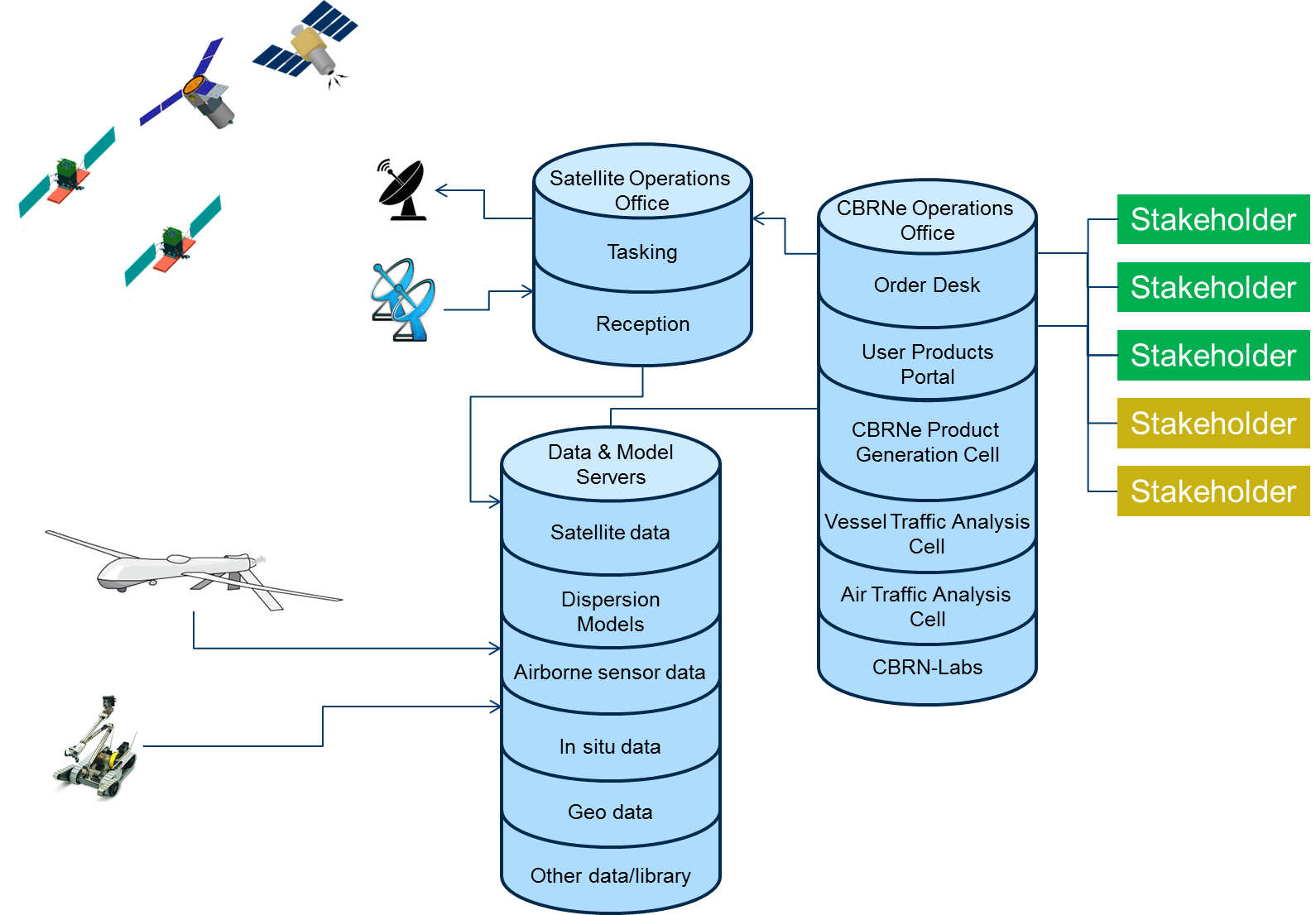
Objectives of the service
Releases of chemical, biological or radiological threat agents constitute a threat to people as well as the environment. Large quantities of hazardous substances are used at industrial facilities and transported between them. These facilities or vessels may be in remote areas with limited possibilities for surveillance or detection with land based services.
Surveillance of such facilities or transport vessels is of great importance for early detection of releases. Given a release, measurements of the released material and/or calculation of how and where and in what concentrations the material is dispersed are crucial information for guiding the mitigation efforts and assessing the possible consequences for exposed personnel. It is furthermore vital to guide vessels and personnel away from the hazard area and into safe areas.
The use of space-based services to aid in surveillance of installations (moving or fixed) with hazardous materials, detection of spills, mitigation efforts and consequence management (including communication) is addressed in the project. There are, however, a huge number of possible CBRN-scenarios. Two more specific scenarios have been selected for the study:
- Monitoring of global shipping for CBRN operations
- Atmospheric radioactive contamination in coastal areas
- Chemical leaks on water with emphasis on the arctic
- Industrial facilities and (nuclear) power stations
- Monitoring fixed facilities
Users and their needs
The target users include:
- Military authorities with responsibilities within safety and hazard management of CBRN incidents
- Civilian authorities with responsibilities within safety and hazard management of CBRN incidents
- Coast guards
- Harbour authorities
- Facility owners
The user needs are investigated in two workshops in the Netherlands and Norway respectively, and cover topics such as;
- Surveillance of industrial facilities
- Surveillance and tracking of vessels transporting dangerous goods
- Communication for situational awareness, operations guidance, and guidance of remotely piloted vehicles
- Detection of airborne releases of hazardous materials
- Access to meteorological parameters with importance for the dispersion of the released materials
Service/ system concept
The CBRN operations intended to counter military and/or civilian CBRN threats can be divided into four phases:
- Prevention (hinder occurrence)
- Preparedness (prepare mitigating efforts, training, exercises, procurement of equipment)
- Response (mitigating efforts, consequence management)
- Recovery (normalization, clean up polluted area)
The concept is intended to assist in all these phases, and encompasses a selection of data and information sources, from satellites, airborne platforms and in situ instrumentation, as well as model output and geospatial data from e.g. map servers. This includes data for surveillance of vessels or facilities, sensor data for detection of spills, navigation and communication. The concept includes a service organisation to handle stakeholder information requests and service requirements. The service organisation interfaces to satellite operators in order to isolate the CBRNE stakeholders from the challenges of converting information requirements into satellite data acquisition orders. A User Products Portal gives access to requested information products.

Space Added Value
Space assets combined with other sensors (land based, mounted on drones, etc.) give a broader picture and better situational awareness close to real-time. Space based assets have the possibility to give regularly, repeated surveillance of areas of interest, thus changes over time can be monitored. Satellites has a broad coverage, including hard-to-reach locations, for instance in the Arctic region. Meteorological measurements from satellite mounted sensors may assist when measuring or predicting the dispersion of the released material.
Gaps with respect to CBRN incident management for which satellite services are believed to be especially appropriate are:
- Large incidents and incidents with cross-border effects - both for communication between responders and decision makers in different countries and for following a release with sensors
- Surveillance of facilities of interest with limited access
Current Status
The feasibility study was kicked off in April 2018 and concluded with the Final Review in May 2019. From various meetings with possible target users with emergency readiness and crisis management responsibilities, it has become apparent that the suggested service will have to support crisis management in a broader sense than for CBRNe exclusively, although the main focus remains CBRNe. A modular system for gathering data from various sources, analyse the data and provide processed information to national crisis management systems is described.




